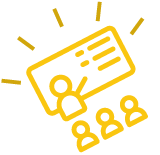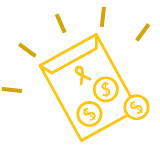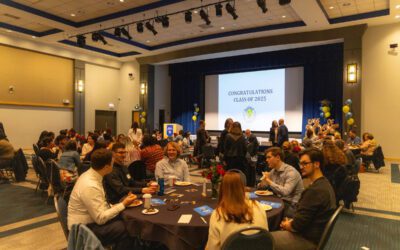[vc_row][vc_column][stm_title title_tag=”h2″ title=”Using Research to Drive Professional Learning”][/stm_title][vc_column_text]AUSL was founded on the belief that transformative impact on our students begins with the leaders in the school and in the classroom. Our work pivots on preparing, supporting, and growing these leaders by investing in them on each step of their development journey.
As districts and networks set in motion new goals and strategies around effective instruction under the ESSA (“Every Student Succeeds Act”) framework, AUSL seeks to build on its strong foundation of preparing, supporting, growing its school leaders over the last 18 years. In this spotlight, we feature how our imperative to support our Science leaders is a charge we don’t take lightly, particularly as Illinois considers adding Science proficiency as a core academic indicator for student achievement to better prepare them for 21st century careers. “Leveraging research to not only inform how we design and enact supplemental materials for our science curriculum but also our professional development program ensures AUSL stays on the cutting edge of both,” says our Associate Director of Science Curriculum & Instruction, Dr. Alissa Berg (as recently featured in 100Kin10’s “Teachers At Work” report here).[/vc_column_text][/vc_column][/vc_row][vc_row][vc_column width=”1/2″][vc_single_image image=”6929″ img_size=”full”][/vc_column][vc_column width=”1/2″][stm_title title_tag=”h2″ title=”Using Research to Drive Professional Learning”][/stm_title][vc_column_text]AUSL Science teachers, whether they come through our Chicago Teacher Residency program, or from other schools or networks, have the opportunity to grow their craft through three primary avenues (primarily funded through a shared federal Teacher Quality Partnership grant with National Louis University):[/vc_column_text][/vc_column][/vc_row][vc_row][vc_column][vc_row_inner][vc_column_inner][vc_column_text]
- Summer Science Institute: Each summer, Dr. Berg and her Professional Learning Community (“PLC”) teachers organize and conduct a multi-day professional development workshop focused on best practices for science teaching and learning. Through this Institute, science teachers and leaders across the network have an opportunity to align and begin the year on the right foot when it comes to the science curriculum and driving its efficacy.
[/vc_column_text][/vc_column_inner][/vc_row_inner][vc_column_text]
“It was great to take a deep dive into a lesson and hear rationale from an experienced teacher on student-led discussion and adaptation of the lessons”
– Middle School Teacher at Dulles School of Excellence
“My one biggest take away was to allow students to struggle with the material and discuss their struggles and teach them less through teacher talking”
– Middle School Teacher at Tarkington School of Excellence
“[My 3 biggest takeaways from SSI are:] Science is important. Our science network in AUSL is amazing. Reach out!”
– Primary Teacher at Tarkington School of Excellence
[/vc_column_text][/vc_column][/vc_row][vc_row][vc_column][vc_row_inner][vc_column_inner width=”1/2″][vc_single_image image=”4496″ img_size=”large”][vc_column_text]2. Quarterly Science Professional Development Sessions: Building off of the foundation of the Summer Science Institute, Dr. Berg seeks to continuously align teacher practice by gathering science teachers and leaders quarterly to reflect on successes and problem-solve challenges from the preceding quarter, and to deepen their learning around the target best practices from Summer Institute. As some participants are the only science teacher at their school or at their grade-level, these quarterly sessions are an important networking and collaboration opportunity as well.[/vc_column_text][/vc_column_inner][vc_column_inner width=”1/2″][vc_column_text]
“Summer Institute and the follow-up quarterly PDs have significantly boosted my confidence and repertoire of planning and instructional strategies. These PDs allow teachers to work together across schools, collaborate, and bring new teaching practices into our own classrooms. I am excited to continue this collaboration and learning for the current school year.”
– Gabriella Gini, 5th Grade Teacher at Marquette School of Excellence
[/vc_column_text][/vc_column_inner][/vc_row_inner][/vc_column][/vc_row][vc_row][vc_column][vc_column_text]3. Ongoing and selective Science Professional Learning Community (PLC). Finally, in an effort to further deepen and grow teacher practice, and develop Science leaders across the AUSL network, Dr. Berg has created and facilitates a robust professional learning community (PLC) where teachers apply to be part of a team of science thought partners that meet monthly throughout year. Learn more about the PLC model below.[/vc_column_text][vc_column_text]
“PLCs are central to our PD model. We start with folks who are ready and interested in taking risks and trying new ideas out in their classroom. By bringing these teachers together around a common problem of practice, situating the learning in their own classrooms, and using evidence of student learning as the basis for refinement of practice, we’ve seen big changes to their teaching. And, the impact is beginning to snowball as they share their expertise and we share the videos and tools they’ve created with their colleagues back at their school and at our network PDs.”
– Dr. Alissa Berg, Associate Director of Science Curriculum & Instruction
“Science PLC has truly shaped who I am today as a teacher and teacher leader. The methods (particularly Model-Based Inquiry) introduced to us in Science PLC are cutting edge science pedagogy and have allowed our network to have a robust transition to the Next Generation Science Standards. The foundation I have gotten through AUSL Science PLC informs my daily practice teaching, instructional coaching, curriculum development, and training of pre-service resident teachers.”
– Tim Nystrand, Chicago Teacher Residency Alum, Science Teacher and Coach at Solorio Academy High School and Middle School Science Methods Instructor for our AUSL Residents
[/vc_column_text][/vc_column][/vc_row][vc_row][vc_column][vc_row_inner][vc_column_inner][stm_title title_tag=”h2″ title=”THE “WHY”: Our Development Model”][/stm_title][/vc_column_inner][/vc_row_inner][vc_column_text]AUSL’s model for Science leader development (and the development of all teachers across the network) revolves around this idea of the PLC, grounded in research literature on effective professional development programming. PLCs bring together teachers at similar grade levels six to eight times a year (during and after school) to:
- Explore problems of practice by reading and discussing literature on a specific topic
- Experiment with strategies in their own classrooms between these meetings
- Engage in “Studio Days”, where a PLC member’s classroom is observed and evidence of student learning is gathered, which is subsequently analyzed to determine implications for instruction and next steps. The group returns to the classroom later that same day to test out one to three of those collaboratively generated next steps and observe impact.
- Serve as the grade-level or grade-band lead for network-wide professional development sessions.
In addition to all STEM programming, AUSL supports the PLC by curating resources around the team’s problems of practice, facilitating PLC meetings and Studio Days, and providing bi-weekly one-on-one support to PLC members as they implement their learning in their classrooms.[/vc_column_text][vc_row_inner][vc_column_inner width=”1/2″][stm_title title_tag=”h2″ title=”THE IMPACT”][/stm_title][vc_column_text]Analysis of student work and student discourse during Studio Days and classroom visits shows an increased ratio of student-to-teacher talk in PLC teachers’ classrooms, increased use of relevant evidence and science ideas in student writing and discussion, and students are better able to explain what they are learning about on any given day and why. Changes in teacher practice have been observed as well, such as 100% of PLC teachers teaching phenomenon-based units, engaging students in developing and refining explanatory models, and using the claim-evidence-reasoning framework to support students in constructing explanations. In addition, PLC teachers spend more time on student-to-student discussion with fewer exchanges mediated by the teacher. K-5 teachers also have increased the time they spend teaching science per week since joining the PLC.
[/vc_column_text][/vc_column_inner][vc_column_inner width=”1/2″][vc_single_image image=”6506″ img_size=”full”][/vc_column_inner][/vc_row_inner][/vc_column][/vc_row][vc_row][vc_column width=”1/2″][stm_icon_box view_style=”style-1″ sep_color=”custom” icon_color=”custom” title_color=”custom” descr_color=”custom” sub_title_color=”custom” separator_enable=”true” title=”Ambitious Science Teacher: AST” descr=”AST is a framework for science teaching that involves four core practices: 1) Planning for engagement with important science ideas; 2) Eliciting students’ ideas; 3) Supporting ongoing changes in thinking; 4) Pressing for evidence-based explanations.” sep_color_custom=”#ffffff” css=”.vc_custom_1540934877803{background-color: #1e7fc3 !important;}” icon_color_custom=”#ffffff” title_color_custom=”#ffffff” descr_color_custom=”#ffffff” sub_title_color_custom=”#ffffff”][vc_empty_space][stm_icon_box view_style=”style-1″ sep_color=”custom” icon_color=”custom” title_color=”custom” descr_color=”custom” sub_title_color=”custom” separator_enable=”true” title=”MBI- Model Based Inquiry” descr=”MBI is a framework for designing science units in which students develop, test, and revise model-based explanations of science phenomena.” sep_color_custom=”#ffffff” css=”.vc_custom_1540837553952{background-color: #1e7fc3 !important;}” icon_color_custom=”#ffffff” title_color_custom=”#ffffff” descr_color_custom=”#ffffff” sub_title_color_custom=”#ffffff”][vc_empty_space][/vc_column][vc_column width=”1/2″][stm_title title_tag=”h2″ title=”WHAT’S NEXT?”][/stm_title][vc_column_text]This year, AUSL is focused on expanding the PLC further and developing additional teacher leaders as well in an effort to ensure just-in-time support for all teachers across the network, not just PLC teachers. This includes using Google Classroom to begin to cultivate an online community where teachers can share ideas, student work, questions, and needs related Model-Based Inquiry (MBI), Ambitious Science Teaching (AST), and our new science curriculum. With PLC teachers at each grade-level facilitating the discussion board for their same-grade colleagues, all teachers across the network will have access to ongoing support to better and more consistently drive student learning. We look forward to building on this strong foundation as we think about where to take our STEM programming next.
Stay tuned for the next installment in this STEM programming series![/vc_column_text][/vc_column][/vc_row][vc_row][vc_column width=”1/4″][stm_btn_simple btn_style=”flat” btn_alignment=”center” btn_link=”url:http%3A%2F%2Fwww.auslchicago.org%2Fblog|title:Return%20to%20the%20Blog||” btn_link_text=”Return to the Blog”][/vc_column][vc_column width=”1/4″][stm_btn_simple btn_style=”flat” btn_alignment=”center” btn_link=”url:http%3A%2F%2Fwww.auslchicago.org%2Fausl-advisory-services%2F|title:Advisory%20Services||” btn_link_text=”Advisory Services”][/vc_column][vc_column width=”1/4″][stm_btn_simple btn_style=”flat” btn_alignment=”center” btn_link=”url:http%3A%2F%2Fwww.auslchicago.org%2Fdonate%2F|title:Donate||” btn_link_text=”Donate”][/vc_column][vc_column width=”1/4″][stm_btn_simple btn_style=”flat” btn_alignment=”center” btn_link=”url:http%3A%2F%2Fwww.auslchicago.org%2Fabout%2Fimpact-through-innovation%2F|title:Innovation%20Zone||” btn_link_text=”Innovation Zone”][/vc_column][/vc_row]
















